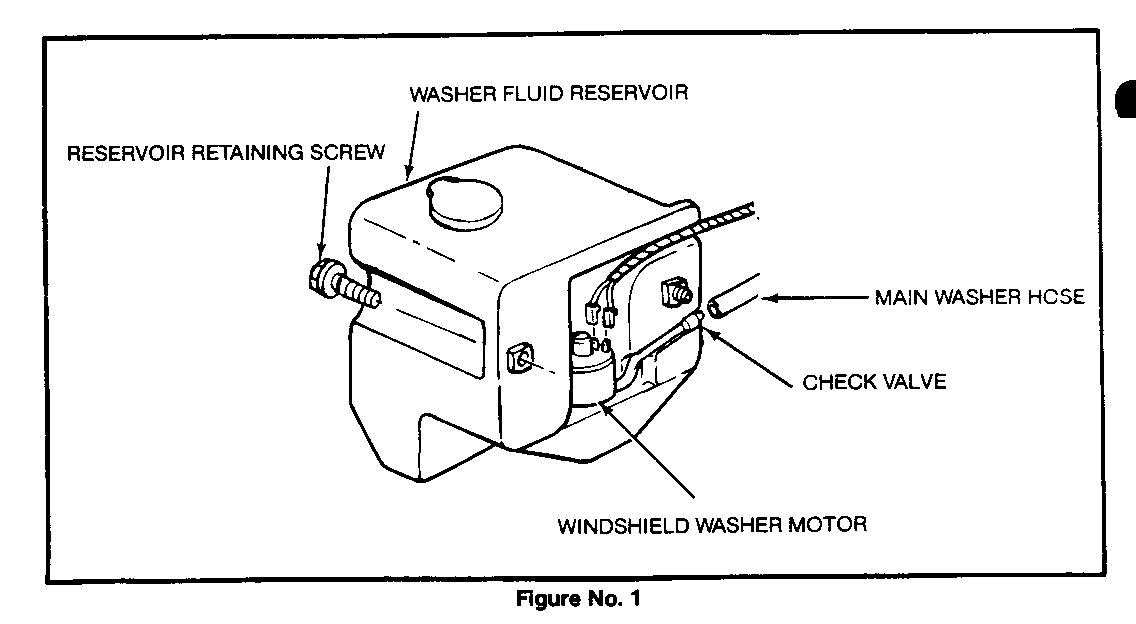W/S WASHER SYSTEM DRIBBLES REMOVE CHECK VALVE AS OUTLINED

MODELS: 1985-86 C/K AND 1987 R/V
On 1985-86 C/K and 1987 R/V models, the windshield wiper/washer system utilizes a "wet arm" design. The advantage of the wet arm system is the accurate and complete spray pattern on the windshield provided by the nozzles.
A component part of the washer system is an inline check valve mounted to the reservoir assembly (See Figure No. 1).The function of the check valve is to keep the hoses between the reservoir and the nozzles full of fluid. Without the check valve, the fluid in the system hoses could drain back to the bottle causing a slight delay in fluid delivery to the windshield.
An unintended effect of the check valve has been washer fluid "dribbling" from the nozzles when making a left turn .The amount of dribble varies from truck to truck, with some vehicles being very noticeable.
To repair this condition, remove the two screws attaching the washer fluid reservoir to the fender. On the back of the reservoir, remove the check valve and short section of hose connecting this valve to the windshield washer motor (See Figure No. 1). Reconnect the main washer hose to the washer motor and reattach the reservoir to the fender.
With the removal of the check valve, a short delay in the delivery of washer fluid to the windshield will be experienced. This delay generally lasts until the wiper blade is 3/4 of the way up the windshield on the first pass.

General Motors bulletins are intended for use by professional technicians, not a "do-it-yourselfer". They are written to inform those technicians of conditions that may occur on some vehicles, or to provide information that could assist in the proper service of a vehicle. Properly trained technicians have the equipment, tools, safety instructions and know-how to do a job properly and safely. If a condition is described, do not assume that the bulletin applies to your vehicle, or that your vehicle will have that condition. See a General Motors dealer servicing your brand of General Motors vehicle for information on whether your vehicle may benefit from the information.
